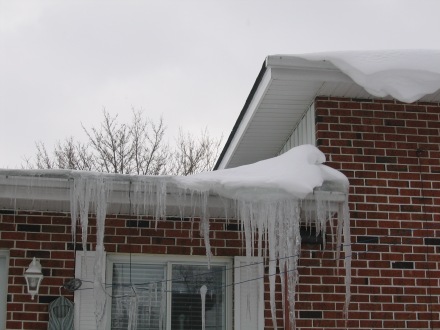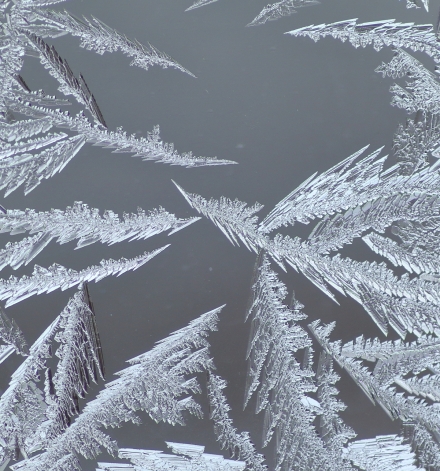That is a curious result that happens. Someone finally invests some serious money in upgrading their kitchen (or bathroom), installing beautiful cabinetry, gorgeous ceiling lights, and finally get the attractive and bright kitchen (or comfortable bathroom) that they always wanted. The following winter, an ice dam forms. The following year, the ice dam gets worse and the ceiling starts to leak after every thaw. What’s going on?
Air Sealing
Spray Foam – good or bad?
Closed cell-spray foam used as insulation, has been on the market since about 1979, and has gone through a number of evolutionary steps. The product is a solid plastic, formed by the chemical reaction of two primary components: an “A” side which is isocyanate, and a “B” side which is usually a mixture of oils, stabilizers, fire retardants, blowing agents, and colouring agents. The reaction is exothermic (ie, generates a lot of heat), and the materials form a solid within seconds. The blowing agents are the compounds which produce the low-conductivity gas that forms the bubbles in the foam, and thereby form the primary insulation.
When applied to a minimum thickness of 50mm (slightly under 2 inches), the material acts as insulation, vapour barrier, and an air barrier. Newly-installed foam has R-values of R-6 to R-7.5 per inch, but this diminishes to about R-5 per inch over time as the insulating gas dissipates. Compared to other insulation products like fiberglass bat or mineral wool bats, the product has more insulating value per inch, and resists the loss of heating value that sometimes occurs with loose insulation due to air convection with extreme temperature differences.
The ability to prevent air and vapor movement is generally a good thing, except in situations where moisture can enter a wood structure, and then cannot get out. Therefore the short answer to the question in the header is “spray foam is good when PROPERLY installed, and BAD when installed in inappropriate places or in an incorrect manner. There are also issues of the impact on the environment, and potential impact on the health of the people living in the homes where the product is used. The rest of the post touches on some aspects that inform whether the installation is good or not.
The Stack effect and roof leaks
During the month of January, I’ve been called to diagnose roof leaks on an almost daily basis. These leaks have a common characteristic – they show up when it’s cold. That usually signals that there is some form of accumulation of water on the roof, usually behind an ice dam, and that the waterproofing is insufficient to stop the water from forcing its way it. The existence of an ice-dam almost always means that there is excessive transfer of heat to the roof which melts the snow on the upper sections, and the resulting meltwater refreezes on the lower section over the soffits. To reduce this heat transfer, we rely on insulation (to reduce the amount of heat leaking into the attic) and ventilation (to dissipate the residual heat before it melts the snow on the roof). However, there is another player in this game, and it can cancel out the efforts at insulating and ventilating. That player is air leakage.
Frost in Attic
Frost can be beautiful. One of the benefits of poorly insulated windows, at least for small children, is the beautiful lace shapes that form – so delicate and yet so enchanting.
Despite this beauty, there are plenty of places where in a home you do NOT want to see frost forming. Certainly, when found on windows, it is a clear sign that the window is not very good at insulating. Another place where you don’t want to see frost, is inside your attic.


